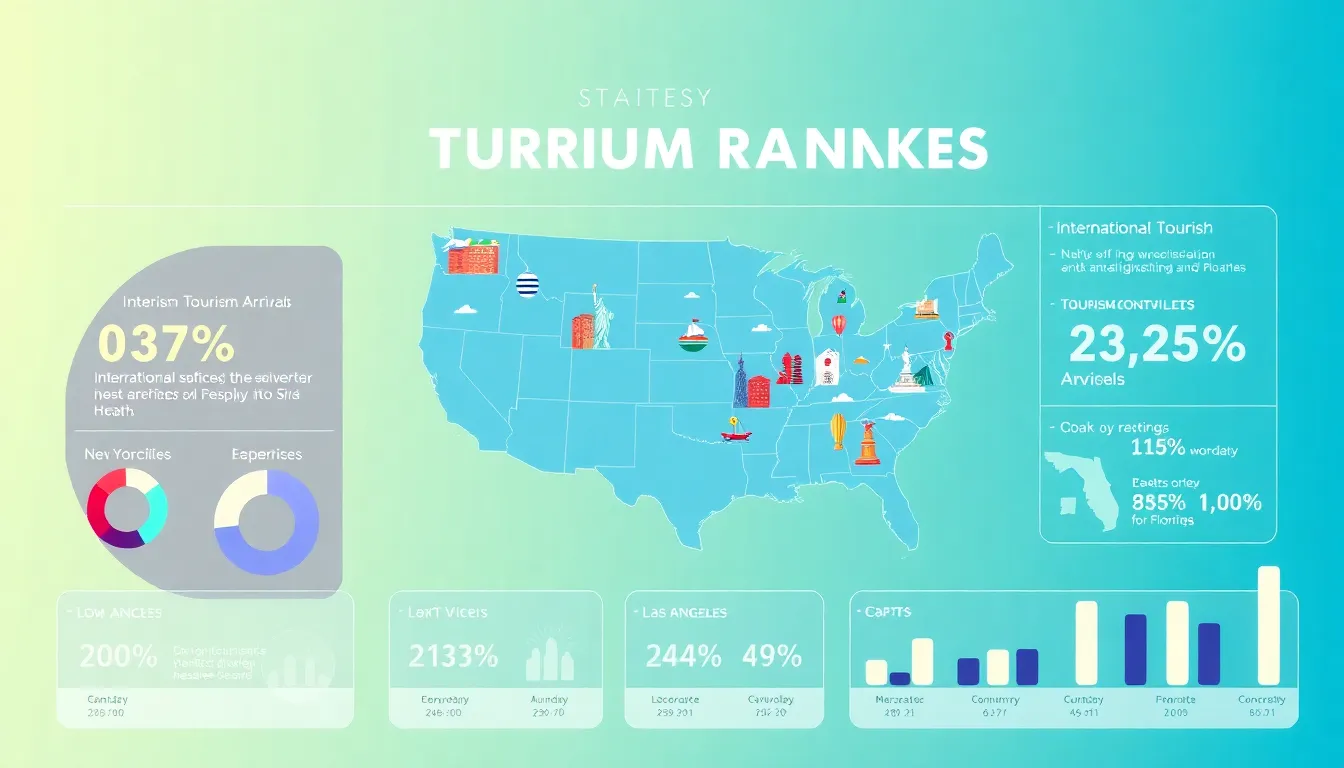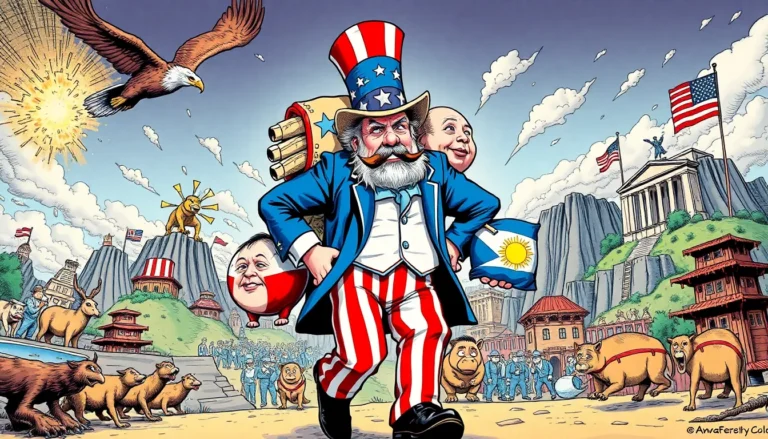When one thinks of enticing travel destinations, certain countries pop up naturally. From the romantic streets of Paris to the exotic beaches of Bali, the world is a cornucopia of experiences waiting to be explored. With tourism being a major economic driver, understanding the rankings of countries in this realm is not only fascinating but insightful as well. In this text, we investigate into the world tourism rankings and uncover the dynamics that shape them, with a splash of humor to keep things light. Why? Because why not learn about travel while chuckling at some of the quirks of the tourism industry? Let’s embark on this journey together.
Table of Contents
ToggleOverview of Global Tourism

The realm of global tourism is vast and rapidly evolving. Each year, millions of travelers globe-trot across continents, seeking adventure, culture, or simply a killer Instagram shot. To put things into perspective, it’s worth noting that, before the pandemic, international tourist arrivals reached a staggering 1.5 billion in 2019. This number includes everything from vacationers in sunny Spain to backpackers in Southeast Asia, showcasing a growing appetite for exploration.
Countries rely heavily on this influx of visitors, as tourism can account for a significant portion of GDP. France, consistently topping the charts, has mastered the art of alluring tourists with its world-famous cuisine, art, and history. Yet, while France claims the crown, other countries are not far behind, continually vying for their own piece of the tourism pie.
Factors Influencing Tourism Rankings
Tourism rankings don’t just pop up out of thin air: several factors influence how countries stand in the tourism arena. Here are some key aspects:
Top Countries in World Tourism Rankings
Countries like France, Spain, and the United States dominate the rankings due to their rich cultural heritage, iconic landmarks, and efficient infrastructure. France, with its Eiffel Tower and charming Riviera, often attracts travelers seeking romance or relaxation. Spain, on the other hand, enthralls with vibrant traditions and a spectacular coastline.
Emerging Destinations in Tourism
In recent years, emerging destinations have started to steal the spotlight. Countries like Vietnam, Portugal, and Iceland have gained traction, appealing to adventurous souls. For instance, Iceland’s breathtaking landscapes provide a scenic backdrop for travelers on a quest for nature’s wonders, while Vietnam offers a delightful mixture of tradition and modernity that keeps visitors coming back for more.
Regional Breakdown of Tourism Statistics
Different regions across the globe showcase distinct tourism dynamics. Europe generally leads the way, drawing millions with its blend of history and modernity. According to the latest reports, 25 of the top 50 tourist destinations are in Europe, signaling its enduring appeal.
Asia-Pacific is on the rise too. Countries like China and Thailand have seen significant increases in tourism, driven by growing middle classes seeking leisure travel options. Not to mention, local attractions in Southeast Asia have come into their own, fostering a competitive environment that encourages improvement in service and infrastructure.
Impact of COVID-19 on Tourism Rankings
Ah, COVID-19, the plot twist no one saw coming. The pandemic rocked the tourism industry like a hurricane, leading to unprecedented drops in international travel. Countries that once thrived on tourism suddenly found themselves reeling. The World Tourism Organization reported that global tourist arrivals plummeted by 74% in 2020, utterly flipping the rankings on their heads.
Widespread travel restrictions forced nations to reevaluate their tourism models. Countries had to pivot quickly. Some focused on domestic tourism, while others revamped their marketing strategies to highlight health safety and sustainability. As the dust begins to settle, it’s intriguing to see how countries are adapting and recovering from the chaos.
Future Trends in World Tourism
The landscape of world tourism is continuously shifting, and several key trends are emerging. Sustainability is top of mind for many travelers today. Tourists are becoming increasingly conscious of their environmental impact, prompting countries to adopt greener practices and promote eco-tourism.
Also, technology is disrupting traditional tourism models. With the rise of virtual travel experiences and augmented reality tours, countries are finding innovative ways to captivate potential visitors from afar. As remote work remains popular, many foresee a blend of work and travel, reshaping what it means to take a vacation.





